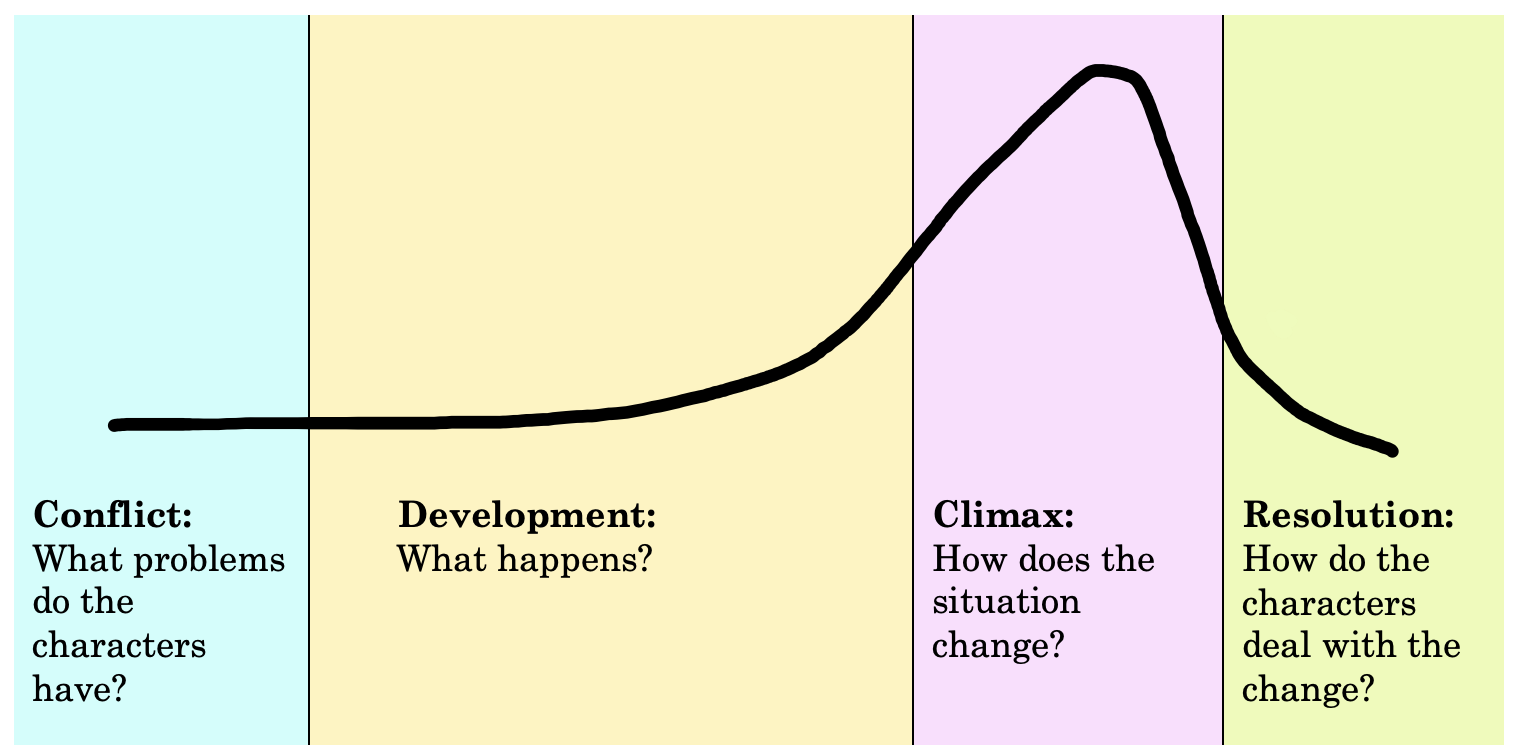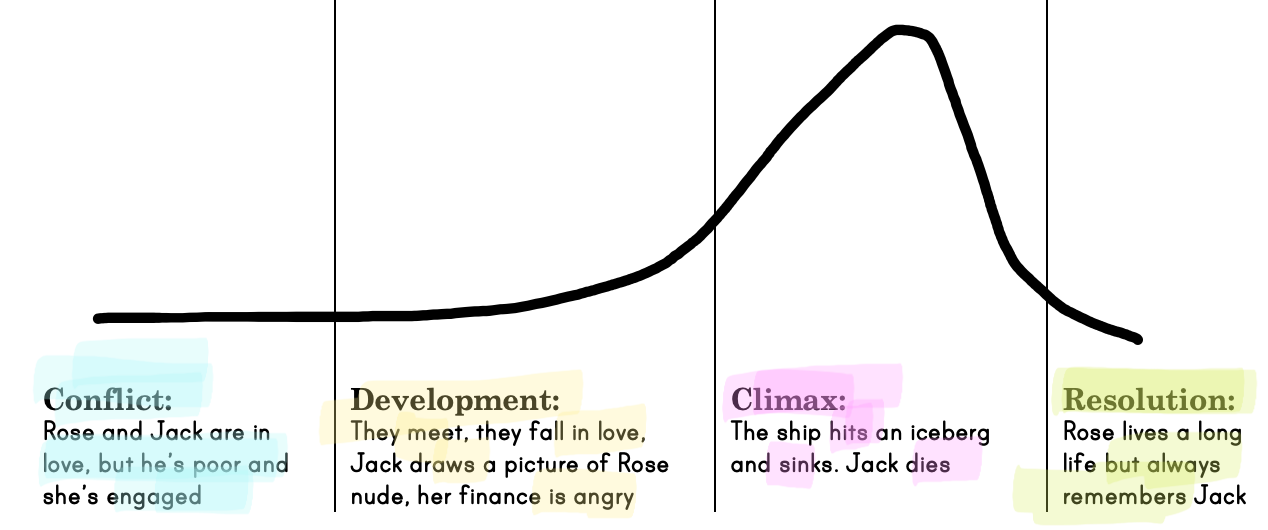1 Vocabulary for Discussing Fiction
Vocabulary for Discussing Fiction
Know these words and phrases. We will use them when discussing the readings.
1. Setting
“Setting” is the time and the place of the story. When and where does it happen?
Try It: Identify the settings of each story.
2. Characters
What are the “characters” in a story? Choose as many answers as you think are correct.
A character in work of fiction can be a main character or minor character.
Try It: For each of these works of fiction, list the main characters. If the answer isn’t a main character, leave it in the box.
Think About …
Can an animal be a character?
How can the reader distinguish between a main character and a minor character?
3. Plot
Plot is “what happens” in a story.
When a person summarizes a movie they have seen, they’re summarizing the plot.
Another way to understand the plot is to ask, “What basic problems do the characters have? How do these problems make the story happen?” This is the narrative arc method.

A Narrative Arc is a curved line with 4 sections. Every story has all 4 sections.
Try It: Fill out the narrative arc for the stories we’ve been talking about. The first is done as an example.
1. Example: Titanic

2. “Cinderella”
3. Harry Potter
Notice that these first three concepts (setting, character, plot) answer the key questions“Where? When? Who? What? Why?”
Using the Study Guides
For each short story, this workbook has a Study Guide. There are several possible ways to use them. Here are some suggestions.
1. Complete the exercises independently
You can work through some or all the exercises as homework or in class, working in small groups to discuss the answers. Write the answers on your own paper and submit as a homework assignment.
2. Discuss in a literature circle
A literature circle is a small group of readers who discuss their reading in depth. There are many possible ways to form a literature circle; usually, each participant in a lit circle has a different job. If you do work in a lit circle, then each participant can choose one or more of the Study Guide questions and work on them independently before getting together with other members of the circle. Some suggested roles for members of a lit circle are:
- Plot Expert: This person understands the conflict, development, climax and resolution. This person can write BOTH a timeline and a Narrative Arc for the story. They can explain these to their group.
- Character expert: This person defines who the major characters are and describes their characters. They choose adjectives and quotations to support their ideas. This person may want to bring a handout with pictures or drawings of the characters to support their ideas.
- Summarizer: This person creates a summary of the plot to share with the group. The Summary should be short but include all the most important points.
- Sentence Clarifier: This person is responsible for explaining some challenging quotations or words to the group. The teacher might assign some phrases, the group might choose some lines, or the clarifier might choose their own difficult parts. They should be able to explain the difficult sections until everyone in the group understands them.
- Context Expert: This person goes beyond the story itself to understand it. They may choose to research the author’s life or the time period when the story was written. They can explain to the group how the time period of the author affected the story.
- Creative Writer: This person writes the next part of the story. What happens after the ending?
If you choose to complete the study guide in a lit circle, meet in your group to divide the tasks fairly. Your teacher may prefer you to discuss the reading in your circle, then use your notes to complete the study guide, or they may prefer you to complete the study guide as part of the literature circle discussion.
3. Poster presentation
To prepare a poster presentation, a group will work in a similar way to the literature circle. Each person should have a specific job within the group. Each person should be responsible for part of the poster that explains some aspect of the story: setting, characters, plot, context, and meaning. As a group, design your poster, following any specific requirements your teacher gives you. You may choose to present your poster verbally to the class or by displaying it to everyone.
4. Slideshow presentation
You might want to do this type of presentation individually, or work in a group. Your teacher might provide a basic slide show for you to complete. Include pictures – always remember to give the source for every picture! – and quotes from the story. Present your slideshow to the class and explain each slide. This is a great opportunity to be creative.

